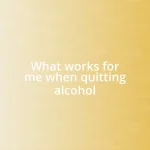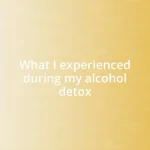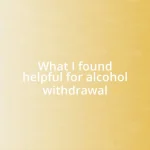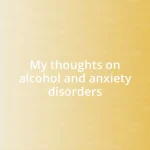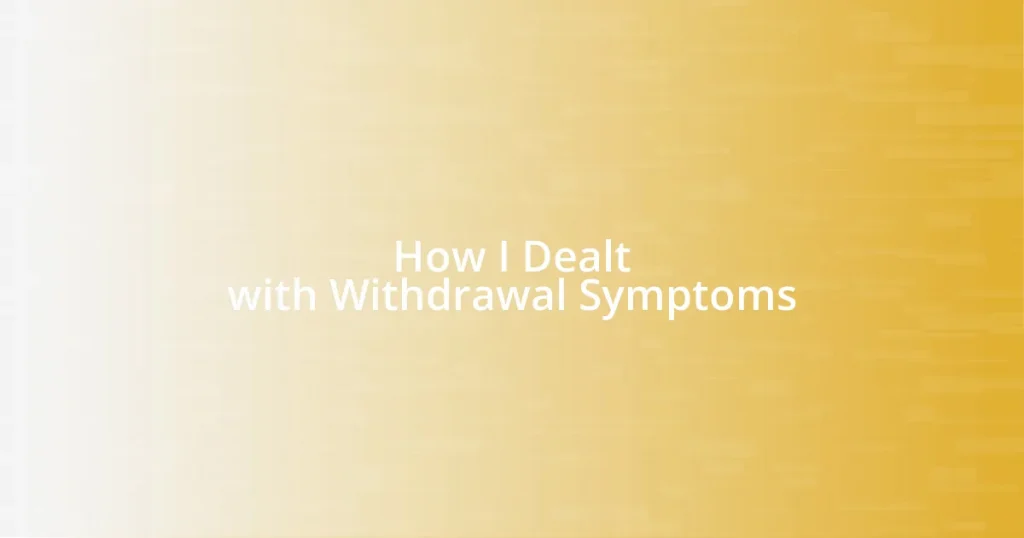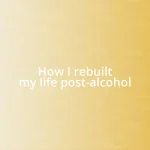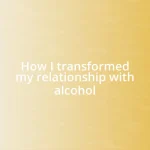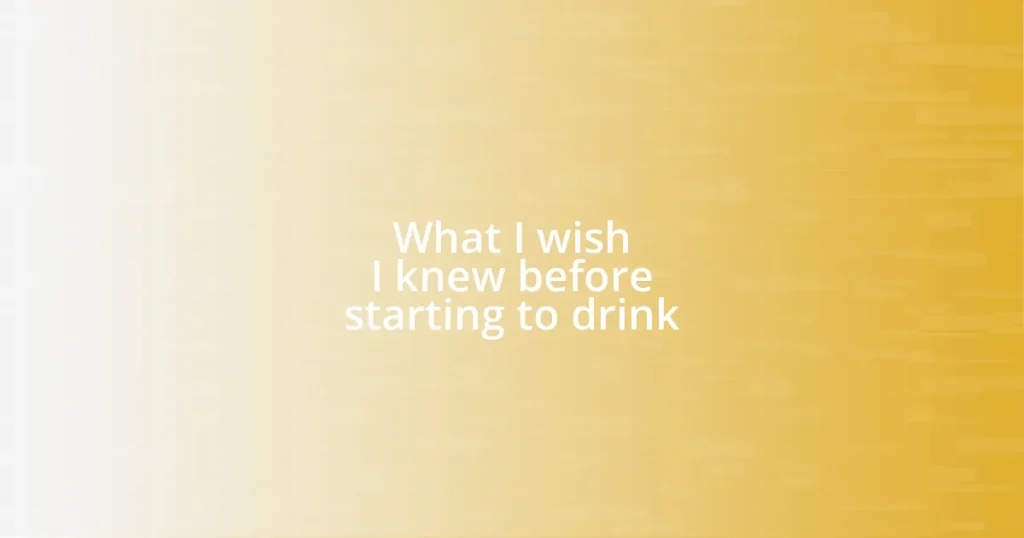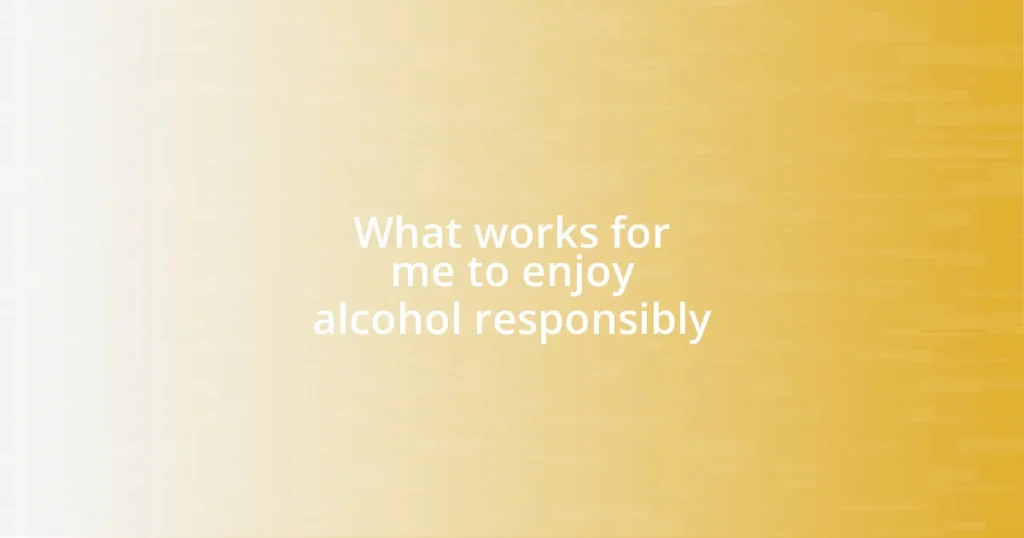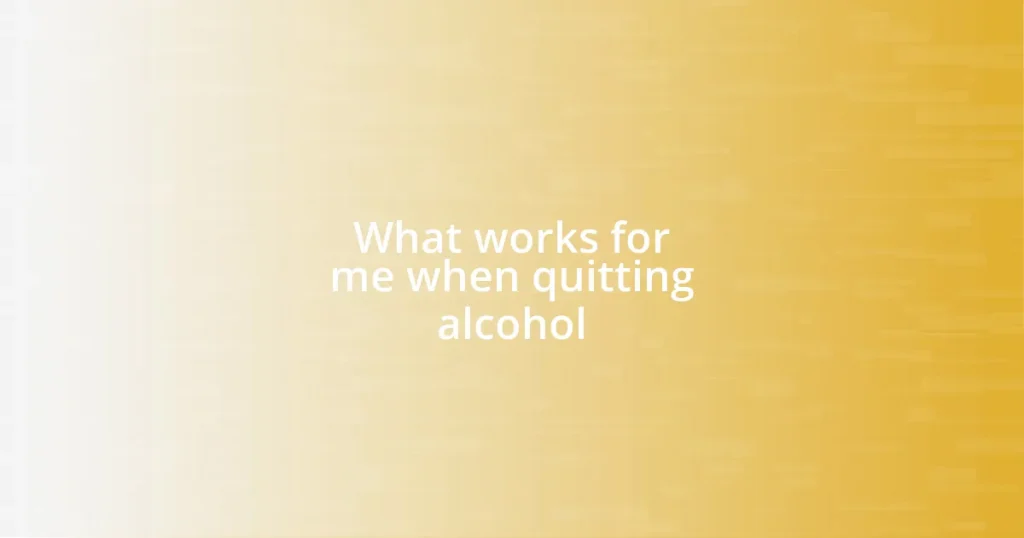Key takeaways:
- Withdrawal symptoms are temporary and can vary based on the substance, duration of use, and individual health, making acknowledgment crucial for gaining control.
- Recognizing triggers—emotional, environmental, and situational—can help redirect energy and maintain focus during the recovery process.
- Building a supportive network and seeking professional help can significantly enhance coping mechanisms and provide a sense of community during recovery.
- Making lifestyle changes, such as prioritizing sleep, improving diet, and engaging in hobbies, contribute to emotional and physical stability in long-term recovery.
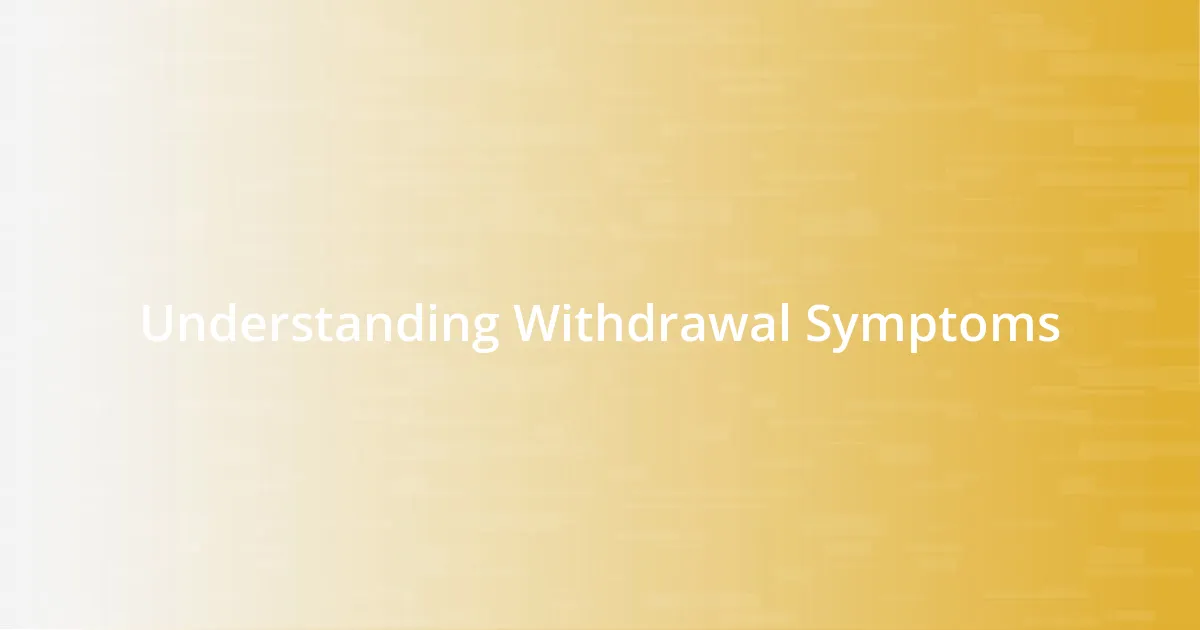
Understanding Withdrawal Symptoms
Withdrawal symptoms can be a challenging and often confusing part of the recovery process. I remember the first time I experienced them; it felt like my body was betraying me, reacting strongly to the absence of what I had relied on for so long. Have you ever felt that sense of panic when something you depended on was suddenly out of reach?
These symptoms can manifest in various ways—physical pain, anxiety, or even mood swings. When I went through withdrawal, I was overwhelmed by a sense of restlessness that made it hard to concentrate on anything. It’s important to realize that these sensations are temporary, though it can sometimes feel like they last forever. How do you cope when your mind and body are at odds?
Understanding the specific withdrawal symptoms of whatever substance you are dealing with can be enlightening. Each person’s experience is unique, shaped by factors such as the substance used, the length of time it was used, and individual health conditions. I found that acknowledging my symptoms helped me feel more in control. What do you think would help you gain that sense of control when facing withdrawal?

Recognizing My Triggers
Recognizing triggers is a vital part of navigating withdrawal. For me, certain people or environments can suddenly evoke strong cravings. I recall a social gathering where I was surrounded by friends drinking; the urge to join in was almost overwhelming. Have you ever found yourself in a similar situation, where just being somewhere made the desire resurface?
In my experience, emotional triggers often sneaked up on me. Certain feelings—like stress or sadness—felt like a gateway back to old habits. I learned to identify these moments and, instead of denying them, I tried to redirect my energy. This shift helped me maintain focus and reminded me that I had the power to choose my reactions. When you face your triggers, how do you respond?
By keeping a trigger journal, I learned a lot about my patterns. Writing down when feelings arose or cravings hit allowed me to reflect and pinpoint the underlying causes. I also compared these insights against positive coping strategies I had developed. It became clearer how intertwined my emotions were with my triggers, and recognizing this was crucial in my journey.
| Type of Trigger | Example |
|---|---|
| Environmental | Social gatherings |
| Emotional | Stress or sadness |
| Situational | Visiting old places |

Coping Strategies That Helped
Coping with withdrawal symptoms requires a toolbox of strategies that can make a significant difference. I found that staying connected with supportive friends and family was invaluable. During my toughest moments, just having a phone call or text chat could lift my spirits when I felt like I was spiraling. Those interactions became lifelines, reminding me I wasn’t alone in this journey.
Here are some strategies that really helped me cope:
- Physical Activity: Engaging in exercise, even a simple walk, provided a much-needed release for pent-up energy and improved my mood.
- Mindfulness Practices: Techniques like deep breathing and meditation helped center my thoughts when anxiety peaked.
- Routine Establishment: Creating a daily schedule gave me a sense of normalcy and kept my mind occupied.
- Creative Outlets: I started journaling and drawing to express my feelings, which felt therapeutic and allowed me to process my experiences.
- Professional Help: Seeking guidance from a therapist provided me with tools to navigate my emotions and cravings.
Ultimately, it was about finding what worked for me and remaining open to experimenting with different techniques. This adaptability made a big difference, as I learned to embrace each step forward, no matter how small.

Lifestyle Changes for Success
Making certain lifestyle changes was instrumental in my path to overcoming withdrawal symptoms. One change I embraced was prioritizing sleep. I remember those early days when I’d lie in bed, wide awake, wrestling with my thoughts. Establishing a calming nighttime routine—like reading or taking warm baths—transformed my restless nights into restful slumbers. Have you ever realized how a lack of sleep amplifies cravings? Through this adjustment, I found that I could handle daytime challenges much better.
Diet was another significant factor. Initially, I didn’t think much about what I was eating. But I quickly learned that my food choices influenced my mood and energy levels. I started incorporating more whole foods, fruits, and vegetables into my meals, and it was like flipping a switch. I felt more stable emotionally and physically. Have you tried tweaking your diet for better wellness? It really opened my eyes to the connection between the foods we consume and our mental health.
Additionally, embracing a hobby brought unexpected joy into my life. I always loved painting but had pushed it aside. Once I picked it back up, I discovered a new outlet for my emotions. Painting became my therapy, a way to express feelings I couldn’t articulate. What hobbies have you set aside that might offer you the same relief? This simple change not only distracted me from cravings but also enriched my daily life with purpose and creativity.

Seeking Professional Support
Seeking professional support proved to be a turning point in my journey through withdrawal. I remember feeling hesitant at first; it felt like admitting defeat. But when I finally reached out to a therapist, I discovered a safe space where I could explore my feelings without judgment. Have you ever felt the relief of simply being heard? That sense of validation was new for me, and it became an essential part of my healing process.
Working with my therapist, I learned practical techniques to cope with my cravings. They introduced me to cognitive behavioral strategies that changed how I viewed my challenges. I often joke that I didn’t know how much I needed to “talk it out” until I started doing it. Each session felt like peeling away layers of my fears and anxieties, revealing the strength I didn’t know I had. What insights might you uncover if you let a professional guide you?
Additionally, joining a support group connected me with others who shared similar experiences. Sharing my struggles in a circle of understanding faces was reassuring. I found strength in knowing I wasn’t alone; others understood the rollercoaster I was on. Does that sense of community resonate with you? It made a world of difference in my recovery, as we celebrated each small victory together, reinforcing the idea that together, we could navigate this storm.

Maintaining Long Term Recovery
Maintaining long-term recovery hinges on continually nurturing those changes I made. For me, this meant being vigilant about my emotions and triggers. I remember a day when an unexpected situation sent me spiraling back to old habits. By practicing mindfulness during moments of stress, I was able to pause and reflect instead of reacting impulsively. Have you ever noticed how a deep breath can make a world of difference?
Establishing a solid support network is crucial for long-term recovery. I actively sought out friends who shared my commitment to a sober lifestyle—it felt like building a fortress against temptation. When I attended community events, I’d gradually open up about my challenges and victories. Being surrounded by like-minded individuals encouraged me to stay accountable. How has your community contributed to your journey toward recovery?
Lastly, I learned that setting new goals was vital for sustaining my progress. While I once focused on just getting through the day, now, I make plans for the future. I recall the thrill of signing up for a local running event; it ignited a newfound sense of purpose. Each goal became a stepping stone, fueling my motivation to embrace life with open arms. What aspirations might you want to pursue as part of your recovery story?

Sharing My Journey with Others
Sharing my journey with others has been an enlightening experience. I vividly remember the first time I opened up about my struggles; it felt like I was unburdening a weight I didn’t realize I had been carrying. Have you ever experienced the relief that comes with vulnerability? That moment of honesty changed my perception of strength and connection.
Once I began sharing my story, I found that it resonated with many. During a coffee chat with a friend, I shared my fears about cravings and withdrawal, and to my surprise, she revealed her own battles. It struck me how our shared experiences forged a bond, reminding me that we are never truly alone. Didn’t it feel comforting to know you’ve touched someone else’s life with your honesty?
Through this openness, I learned that my journey could inspire hope in others. I started journaling and sharing excerpts of my thoughts and feelings, and some of my friends even encouraged me to create a blog. It was exciting to think about how my story could echo for someone else in pain, sparking a conversation that could lead them toward healing. What if your story held the key to someone else’s breakthrough?


